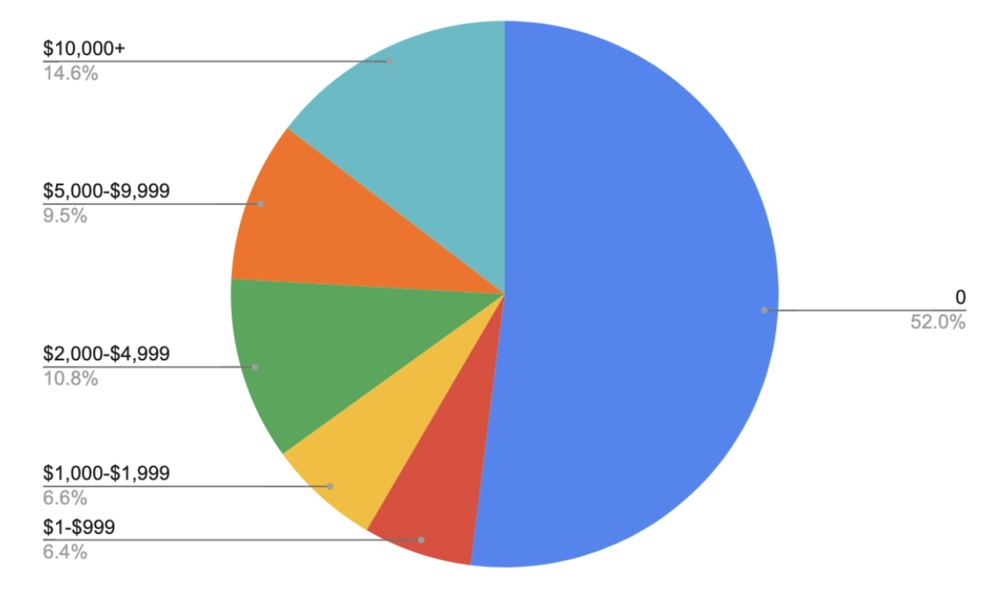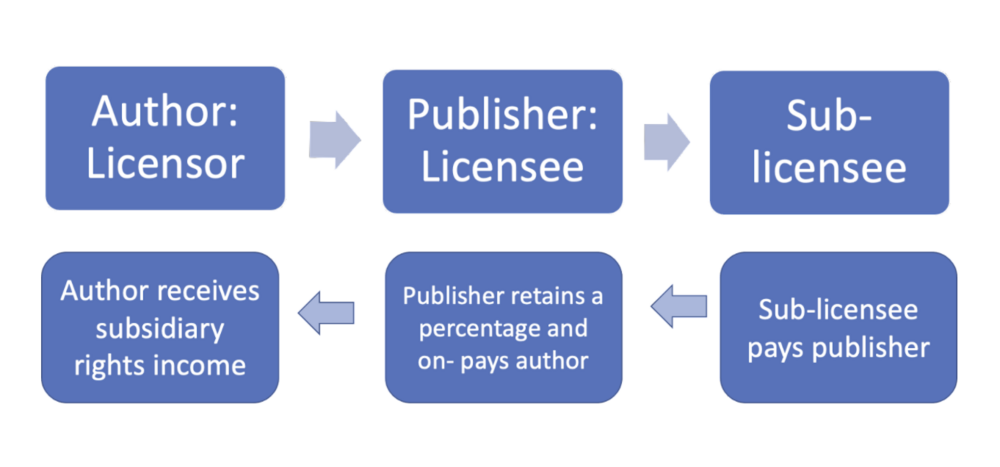11.08.21
The second in our series of articles exploring the questions to ask your publisher before you sign the contract. To read our first article in the series, Questions to ask before granting rights, click here.
This article relates only to trade publishing; please be aware that the commercial norms in educational and academic publishing are different.
A caveat before we begin: we acknowledge that authors' bargaining positions vary greatly and while we always encourage authors to negotiate for the best deal they can reasonably achieve in their particular circumstances, we do understand that sometimes publishers won't budge. This article isn’t intended to be prescriptive but we hope you find that it arms you with the knowledge you need to negotiate, where it is possible.
The money you’ll earn from your publishing contract falls into three categories:
Below we pose questions to think about for each category.
The Advance
The main reasons authors push for the best advance they can are:
The main reasons authors do not push for an advance are:
The ASA’s observation is that, in very broad terms, small publishers are often paying no advances at all, medium publishers tend to pay modest advances, and large publishers pay modest to very substantial advances.
The size of advances range enormously. According to ASA’s 2020 survey, 51.99% of respondents indicated they received no advance for their work, and a further 23.89% received an advance between $1 and $4,999. 14.6% received an advance greater than $10,000.

Given this range, it is impossible to offer any norms. One formula to be used as a rough guide is to ask for an advance of one half of the royalties you would earn on the initial print run (10% x RRP less GST x half the number of books to be printed in initial print run)
Questions to ask yourself when negotiating the advance:
Questions to ask your publisher when negotiating the advance:
Royalties
Industry standard royalties for trade publishing are:
The ASA recommends negotiating for risers on your print sales, which means that you would get a higher royalty when your book sales exceed agreed upon thresholds. For example, you could negotiate up to 12.5% of RRP after the first 10,000 sales and up to 15% of RRP after 25,000 sales if your work has strong commercial appeal; these sales thresholds will vary by genre and sales potential.
Most authors do not achieve rising royalties on ebook or audiobook sales. Risers on digital sales are difficult for publishers to process, because of the way digital retailers report their sales, which often does not include unit sales. There are two ways to try and overcome this impediment to rising royalties for digital formats.
One is to do your utmost to increase the base royalty; negotiate as hard as possible on your flat rate. Industry standard for ebooks has settled at 25% but given the marginal costs of digital reproduction, the ASA strongly encourages authors to try to bargain that amount up to 30% of net receipts if you can. If you are an author in a strong bargaining position, with a very high level of ebook sales, you should be getting more than 25%.
The other way is to negotiate rising royalties based on the dollar value of sales. For example, you could negotiate for 25% of net receipts up to $20,000 sales, 30% of net receipts from $21,0000 to $50,000 and 35% thereafter.
Questions to ask your publisher when negotiating royalties:
There may be acceptable reasons but you want to understand them.
There is little reason for publishers to refuse risers given they only kick in if the book sells very well, after the publisher has recovered its initial costs.
The ASA recommends net receipts ought to be defined as the publisher’s invoiced revenue from the sale of the Work. This means the only allowable deductions from the retail price are GST and the bookseller discount.
Most small to medium sized publishers pay a commission on net sales to their distributor. That distributor reports the net sales every month, then deducts their commission, which can be up to 30% of net sales depending on the range of services they are offering, and then remit the balance to the publisher. Always make sure that your publisher is calculating your royalty on the net sales before that fee deduction, or else your royalty payment will be significantly smaller.
At an average bookseller discount of 45%, your net receipt royalty should be around 18% of net sales to be equivalent to the industry standard payment of 10% of recommended retail price.
Your publisher might sell books to an independent bookshop at a discount of, say, 45% but might sell a much larger volume of books to a discount department store at a 60% discount. These latter sales are known as ‘high discount sales’. As mass market retailing has grown in importance as the channel for book sales, the high discount royalty clause has become a standard clause in most publishing agreements. The ASA recommends that high discount sales are defined as sales of the Work to retailers at a discount of 55% or higher, ideally 60%.
We have heard concerns from authors that a growing portion of their overall new release sales are being sold at high discount, which partly reflects the growth in discount retailers but also may be reflecting the pressure from publishers to set the high discount threshold too low in publishing contracts. Do your best to keep that threshold at 55% discount or higher.
Income Sharing from Subsidiary Rights
In publishing contracts, you as the author are the licensor and the publisher is the exclusive licensee of your copyright work. The publisher may also sub-license third parties to exploit your work and then will share the resulting income with you. For example, the publisher might license an overseas publisher to publish your book in another territory, and possibly another language.

For the ‘sale’ (sub-licence) of subsidiary rights, think of your publisher as similar to an agent, acting on your behalf. Given that agents will take 20% commission on overseas rights sales, it is reasonable for a publisher to retain a similar share, 20%, and then on-pay the remaining 80% to you.
The ASA recommends that income from subsidiary rights generally be split 70 - 80% to the author and 30 - 20% to the publisher, with the exception of Copyright Agency payments which are generally split 50 / 50 in trade publishing.
Questions to ask when negotiating for share of income from subsidiary rights:
If you are being offered lower than a 65% share, ask for a justification as to why such a high portion of income is being retained by the publisher.
The ASA’s view is that the only cost that publishers should be deducting is sub-agent fees. For example, if a publisher has a sub-agent in a foreign territory who negotiates the deal on their behalf.
If you are unsure of the reasonableness of the commercial terms in your publishing agreement, you can always talk to the ASA via our free advice service. Remember that the more authors negotiate for fair royalties, fair risers and fair high discount royalties, the more those standards are maintained across the whole industry. You are entering into a potentially long-term business partnership with your publisher: it’s ok to negotiate.
...stay tuned for our next article in this series: Questions to ask about your publisher’s sales and marketing plan.
Keep up-to-date with ASA advocacy, support and advice
with our fortnightly newsletter.